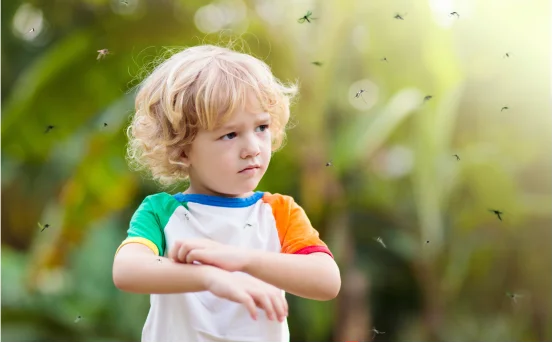Chikungunya is a viral disease transmitted to humans by infected mosquitoes, primarily Aedes aegypti and Aedes albopictus. Over the past few decades, Chikungunya has re-emerged in various parts of Asia, Africa, and the Americas, including outbreaks in India. Due to its rapid spread and often debilitating symptoms, awareness about the early and progressing signs of Chikungunya is essential for timely diagnosis and proper care.
First identified during an outbreak in Africa in the 1950s, Chikungunya has since resurfaced in large scale epidemics across Asia and the Americas. Its symptoms can closely mimic other mosquito borne illnesses like dengue and Zika, which makes timely and accurate diagnosis crucial. However, what sets Chikungunya apart is the severity and duration of joint related symptoms, which may persist for weeks or even months after the initial infection.
What Is Chikungunya?
Chikungunya is caused by the Chikungunya virus (CHIKV), a member of the Alphavirus genus. The name “Chikungunya” originates from the Makonde language, roughly meaning “that which bends up,” referring to the stooped posture caused by severe joint pain one of the hallmark symptoms of this disease.
Unlike dengue or malaria, Chikungunya is not usually fatal. However, it causes extreme discomfort and can lead to prolonged joint pain and fatigue, especially in older adults or those with pre existing health conditions.
Incubation Period: When Do Symptoms Start?
The incubation period of Chikungunya typically ranges from 2 to 7 days after a person is bitten by an infected mosquito. In most cases, symptoms begin abruptly and are often mistaken for other viral infections like dengue, making early recognition all the more important.
Common Symptoms of Chikungunya
- High Grade Fever :- The most common and often the first symptom of Chikungunya is sudden high grade fever, which may rise up to 104°F (40°C). The fever usually lasts for 2 to 3 days but can sometimes persist for up to a week. It is frequently accompanied by chills and fatigue.
- Severe Joint Pain (Arthralgia) :- One of the most distinct symptoms of Chikungunya is intense joint pain, particularly in the hands, wrists, ankles, and knees. The pain can be so severe that it impairs movement and daily activities. This joint pain often appears within the first few days of infection and may persist for weeks or even months, resembling symptoms of arthritis.
- Muscle Pain and Body Ache :- Patients often report widespread body ache and muscle soreness, especially in the back and limbs. This muscle discomfort contributes to a feeling of overall fatigue and body weakness, which can make rest and recovery more challenging.
- Skin Rash and Other Dermatological Symptoms :- About 30% to 50% of patients develop a maculopapular skin rash. These rashes usually appear 2 to 5 days after the onset of fever, affecting the torso, arms, and legs. In some cases, the rash may also involve the face or cause mild itching. Redness of the eyes (conjunctivitis) and ulcers in the mouth may also occur in certain patients.
- Fatigue and General Weakness :- Even after the fever subsides, fatigue and extreme tiredness may continue for several days or weeks. This prolonged exhaustion is one of the more frustrating aspects of recovery, especially for people trying to return to work or resume their daily routine.
- Headache and Nausea :- Headache, often concentrated behind the eyes or in the temples, is another common symptom of Chikungunya. Some patients also experience nausea or vomiting, though these are less frequent than in diseases like dengue. Sensitivity to light (photophobia) may also occur in a few individuals.
- Swelling and Stiffness in Joints :- In some patients, joint swelling and stiffness occur along with pain. This stiffness is especially noticeable in the morning or after periods of inactivity. It mimics rheumatoid arthritis, which can make diagnosis challenging without proper testing.
Rare but Serious Symptoms
Although uncommon, Chikungunya can sometimes lead to complications, particularly in older adults, newborns, and those with compromised immune systems. Rare complications include :-
-
Neurological symptoms, such as encephalitis, seizures, or confusion
-
Cardiovascular issues, including myocarditis
-
Ocular problems, such as uveitis or retinitis
-
Hemorrhagic manifestations, though far less common than in dengue
These complications require immediate medical attention and are usually managed in a hospital setting.
Chikungunya vs. Dengue: Differentiating the Symptoms
Both Chikungunya and dengue are transmitted by the same type of mosquito and often occur in the same regions. However, joint pain is more severe and longer-lasting in Chikungunya, while bleeding symptoms (like nosebleeds or gum bleeding) are more prominent in dengue.
A proper diagnosis often requires a blood test, such as Chikungunya IgM/IgG antibody detection or RT-PCR, to confirm the infection and rule out other similar illnesses.
How Long Do Symptoms Last?
In most cases, acute symptoms like fever and rash resolve within 7 to 10 days. However, joint pain, fatigue, and stiffness can persist for weeks or even months, especially in older individuals. This condition is known as post viral arthritis and may require long term management, including physical therapy or anti-inflammatory medications.
When to See a Doctor?
You should consult a doctor immediately if you experience :-
-
Sudden high fever with joint pain after a mosquito bite
-
Prolonged fatigue or worsening joint symptoms
-
Any signs of confusion, chest pain, or vision problems
-
Symptoms lasting beyond two weeks without improvement
Early diagnosis not only helps in symptom management but also prevents unnecessary medication or hospitalization for similar illnesses like dengue or malaria.
Conclusion
Chikungunya is a viral infection that, while not life-threatening, can severely impact your quality of life due to its intense joint pain and lingering fatigue. Recognizing the early symptoms of Chikungunya such as fever, muscle ache, and joint stiffness plays a crucial role in timely diagnosis and appropriate care.























